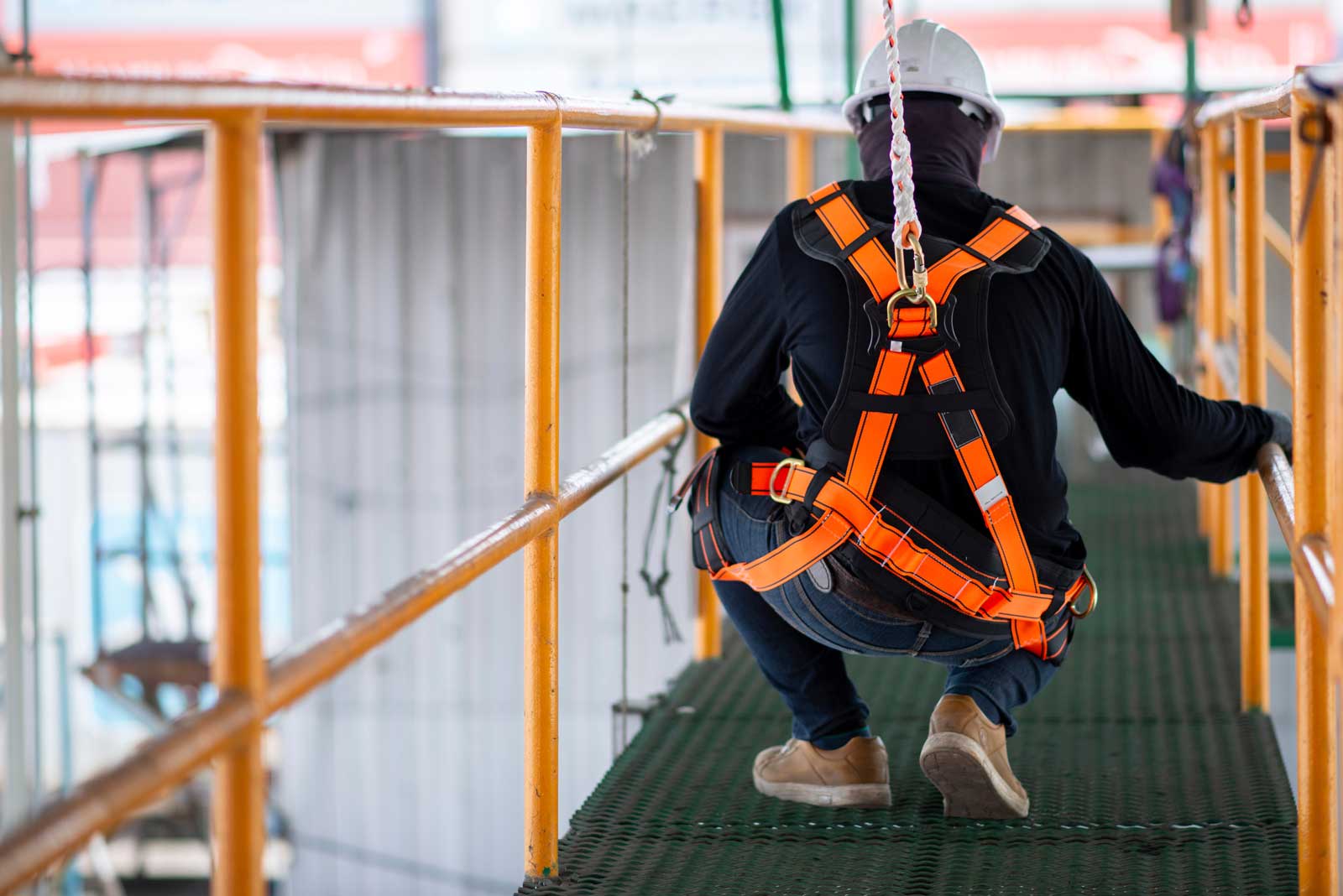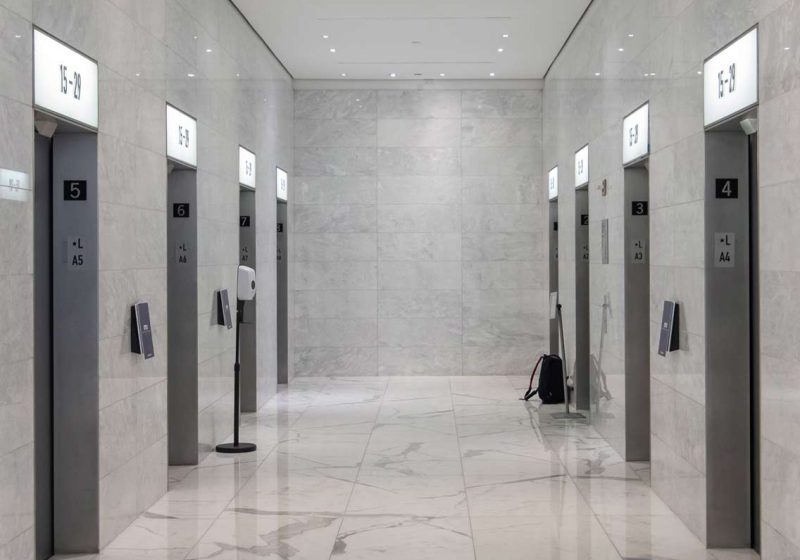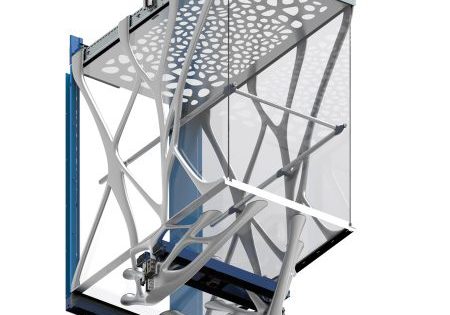Bill’s Memo: A History of Fall Protection and Fall Protection Compliance
May 5, 2023

How a single decision made the industry safer for years to come.
by Ray Downs
In 1993, Otis Elevator North American Operations (NAO) President William “Bill” Miller sent a memo to all his divisions to address a recent run of accidents at Otis. His memo changed the way the elevator industry addresses fall protection — not only at Otis NAO, but at Otis worldwide and other companies around the world. No matter what company you work for — OEM, independent, union or non-union — chances are this affects you. It was a bold move at the time that prompted plenty of pushback — not only from field employees but managers, too, and, yes, I was one of them.
Bill began his memo by observing there had been a tremendous improvement in Otis’ overall accident rates, but that field associates continued to sustain serious injuries. He highlighted recent accidents in 1993 that resulted from failure to wear safety belts or harnesses, failure to tie off when working at heights or failing to follow Otis’ Lockout Tagout (LOTO) procedures. Over a seven-month period, Otis NAO experienced six serious accidents, all potentially fatal. Four were falls, and two resulted from failure to comply with existing LOTO safe work practices.
Those reading this article may or may not remember the safety belt. It was similar to the weightlifting belt you see used by powerlifters. Also, back in those days, lifelines were knobby cables and, when you tied off your snap hook to the lifeline, there were concrete knobs every 6 ft apart to stop the snap hook if you fell. Now, we have the cable grab!
In his memo, Bill summarized why he made his decision, highlighting a number of accidents that took place in Otis NAO. These included:
- A construction mechanic falling 39 ft in a duplex dumbwaiter hoistway. He sustained numerous injuries. He was not tied off because he had left his safety belt on the floor at the dumbwaiter entrance.
- A construction mechanic falling 20 ft while attempting to go from the top of one car to the platform of another. He was not wearing any fall protection.
- A construction mechanic falling 26 ft in the hoistway. His safety belt was in the trunk of his car.
- A construction helper falling 17 ft in the hoistway. He was not tied off.
- A construction mechanic receiving a disabling electrical shock when he came in contact with a live wire in a hydro tank. He had failed to LOTO the mainline disconnect.
The fall protection and LOTD topics are now part of the “9 Safety Absolutes” that are implemented throughout the elevator industry today. The Safety Absolutes were developed by the National Elevator Industry, Inc., in partnership with the National Association of Elevator Contractors and the National Elevator Industry Educational Program. They are Fall Protection Safety Absolute 1 and LOTO Safety Absolute 4.
Bill went on to say there are no excuses. All associates must wear fall protection, tie off and fully comply with LOTO procedures. Thirty years later, I am sure we all fully support these statements.
Bill emphasized the same quality-of-life issues we promote today by saying, “We care about your safety; and your family cares, too.” At TEI Group, our motto is the same. We emphasize that “your family depends on you” to come home every night safe and sound.
What followed Bill’s memo was a mandate sent to all Otis divisions to be deployed throughout the entire workforce stating:
“Effective July 1, 1993, every field associate at construction jobsites must wear a safety belt or full body harness at all times while he or she is working and must also tie off any time he or she works at elevated levels of six feet or more where guardrails are not present to prevent a fall.”
By year’s end, all safety belts were replaced by a full body harness.
The seriousness of the above actions addressed accountability for those who did not abide by these rules, including management who arrived on a jobsite not wearing a body harness. Such an action would result in an immediate suspension without pay for two days. At the time, many felt this was excessive, but what it did do was set a standard for Otis that eventually the rest of the elevator world would follow. When you look back on his decision and mandate now, Bill was a visionary and ahead of his time.
He also addressed the LOTO issue, highlighting Otis’
written procedure found in its Employee Safety Handbook that covered LOTO and to which all construction and service associates were to strictly adhere. This procedure is the same one we deploy and implement today, 30 years later, throughout the elevator industry.
Bill saw the benefit of all construction and service department employees participating in weekly safety “toolbox talks” during which they would discuss topics relevant to the job(s) or task(s) at hand. We do the same today, forwarding to all, via text message, email or over phone messaging, a weekly toolbox talk. However, it is difficult to make sure everyone is reading and discussing safety prior to a job starting. That remains our challenge today. Fast forward to 2023. Now, we ask our field associates to conduct a written job hazard analysis/pre-task plan prior to the start of each task to address any unsafe conditions and take the necessary safeguards.
Bill closed his memo by observing suspension for not following the fall protection or LOTO procedures is not intended as punishment. The objective is to save lives and refocus all associates on the necessity of working safely. Let us work together to insist we all return home to our loved ones safely every night and make the elevator industry the safest industry worldwide.
My safety hard hat is off to [1993 Otis Elevator NAO President William “Bill” Miller] in appreciation for one decision that changed the way an industry addresses fall protection.
I worked under Bill as the Northeast regional manager for Environmental, Health & Safety (EHS), and hope you agree that our industry today is much better off because of leaders like him who took the position of safety and family first that paved the way for our safety programs of today. His vision and oversight when his memo hit the Otis divisions 30 years ago changed the
way Otis addresses fall prevention in the workplace and is now implemented throughout the industry.
In today’s modern elevator industry, we see dramatic changes, including full body harnesses, vests and coverall bibs with the harnesses built right into them. We have stainless-steel lifelines made of cable without the concrete knob every 6 ft. We have barricades that meet or exceed OSHA standards. We have screening for the hoistway with pearl weave netting to avoid contact with the adjacent elevator car in a multibank system. Training has reached new heights among new hires, and seasoned employees that receive yearly fall protection training will participate in OSHA’s Safety Stand Down Day to Prevent Falls on May 1-5. During this week, field teams will take a few minutes out of their day to discuss fall protection safety so no one places themselves in a fall hazard situation while working on a construction or modernization jobsite. Vital safety measures include wearing a full body harness and tying off when a fall of 6 ft or greater is present before the start of the task.
In closing, if you ever have to make a decision that is uncomfortable but right, like the one William “Bill” Miller did on June 16, 1993, just imagine how one decision can change an industry for the better and reverberate into the future. I extend to Bill and his family continued good health. My safety hard hat is off to him in appreciation for one decision that changed the way an industry addresses fall protection.
Be safe, and be well.
Get more of Elevator World. Sign up for our free e-newsletter.









